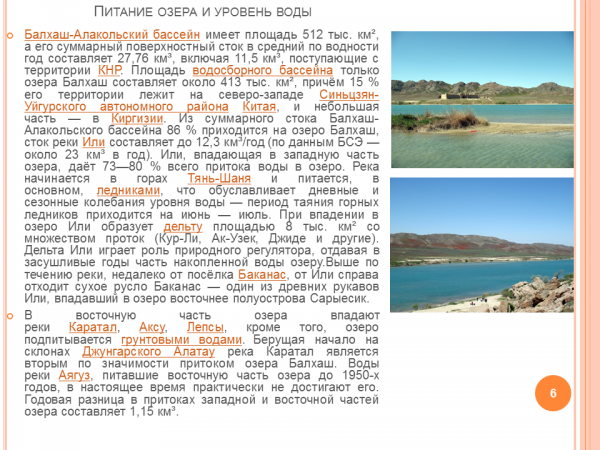Ozero Balhash Prezentaciya

Kazakhstan (1) The Republic of Kazakhstan is an independent state situated in the central part of Euroasia. In the west and north Kazakhstan borders on Russia, in the south – on Turkmenistan, Kirgiziya, Uzbekistan, in the east – on China. It is the ninth biggest country in the world with the territory 2,7 million square km. The population is over 15 million people. Kazakh is the official language, Russian is the language of international communication.
Here's a trick I've done.(if I'm understanding your problem correctly).' Non mortise door hinge. I glue it to the door. Build up' the mortised-out area toward the edge of the door with small strips of cardboard.
Usage Statistics for daviddfriedman.com Summary Period: October 2014 - Referrer Generated 01-Nov-2014 00:32 EDT. Statistics for dethaicuisine.com Summary Period: October 2014 - Referrer Generated 01-Nov-2014 00:04 ICT.
About one hundred nationalities and ethnic groups live in our country. The Republik of Kazakhstan consists of 14 oblasts. Nowadays it has 85 cities, 169 regions, 2150 settlements. Astana is the capital of the country. The Republik of Kazakhstan is a secular, democratic and unitary state. The head of state is President. The highest legislative organ is Parliament consisting of the Senate with 47 senators and the Majilis with 67 deputies, local representative authorities are Maslikhats.
The executive power belongs to the Government. The currency is tenge. The Kazakh people were formed by a process of assimilation of ancient tribes that inhabited the territory of Kazakhstan in prehistoric times. The Kazakhs led a nomadic life roaming along the boundless steppes their herds.
As a result of ethnic, political and social-economic processes in 1468 an independent Kazakh State was founded on the territory of Kazakhstan. The annexation of the Kazakh territory had been finished by the second half of the 19 th century. In 1936 Kazakhstan became a Union Republic, during 70 years our country was under the rule of the Soviet power. In 1991 Kazakhstan got its Independents. Kartinku abonent umer.
The first president was Nursultan Nazarbaev. The new Constitution of the Republic was adopted in 1995. The land of Kazakhstan is rich in mineral resources, including large reserves of oil, iron, ore, copper, chrome, gold and silver. Our country is an advanced agricultural state. It gives people wheat, cotton, rise, apples, vegetables. The Sovereign Kazakh Republic is developing its political and economic ties with other countries of the world. The important social, economic and political reforms are being undertaken in our independent country.
It plays an important role in the world. Kazakhstan (2) ( for advanced students) General information and geography: The Republic of Kazakhstan is a sovereign independent state in the centre of the Eurasian continent. The official language is Kazakh. The Russian language is officially used on equal grounds along with the Kazakh.
The republic celebrates its Independence Day on December 16. The population of Kazakhstan is 16 million 402 thousand. People of more than 130 nationalities live in the country: Kazakhs – 53.4%, Russians – 30%, Ukrainians – 3.7%, Uzbeks – 2.5%, Germans – 2.4%, Tatars – 1.7%, Uygurs – 1.4%. According to the administrative and territorial division, Kazakhstan consists of 14 regions and 223 districts. The President is Nursultan Nazarbayev. Astana is the capital of Kazakhstan.
The Republic of Kazakhstan lies directly between Europe and Asia, to the south from the Ural Mountains. The southwestern border is washed by the Caspian Sea. Kazakhstan borders on China (1,460km), Kyrgyzstan (980 km), Turkmenistan (380km), Uzbekistan (2,300km), Russia (6,467 km).
The total extent of Kazakhstan's borders is nearly 12,187 km. The territory is 2,724,900 sq.
The territory of the country stretches for 1600 km from north to south and 2800 km from west to east: the total area is 2.7 million square kilometers. The size of the territory places Kazakhstan ninth in the world, after Russia, Canada, China, USA, Brazil, Australia, India and Argentina, second among CIS countries. The Kazakhstan territory is greater than that of the twelve countries of the European Union. The landscape of Kazakhstan is diverse: about 10% of its territory are highlands; the rest - lowlands, plains and hills. The South-West, North and central parts are mostly plains. In the South-East, there are mountains with peaks rising as high as 5000-6000 meters above the sea level.